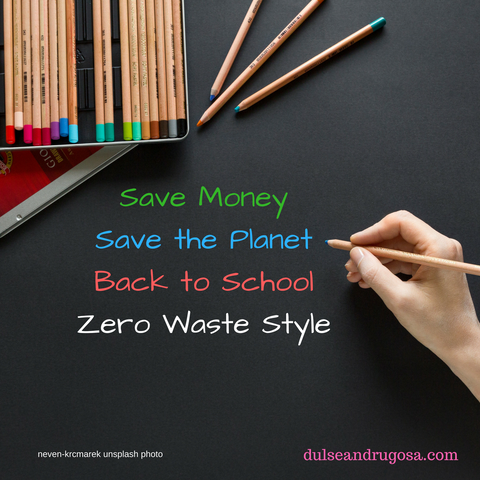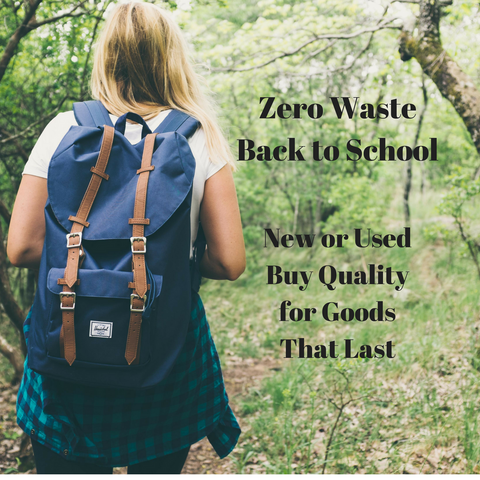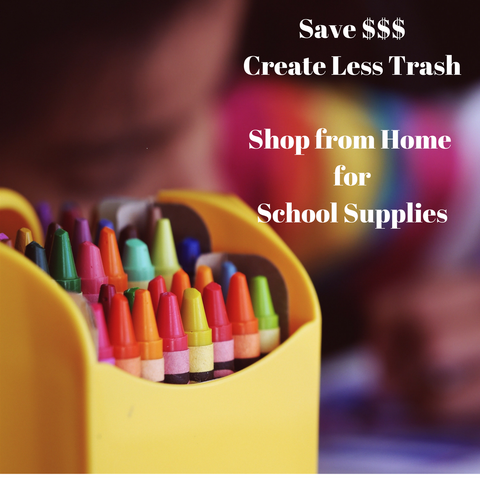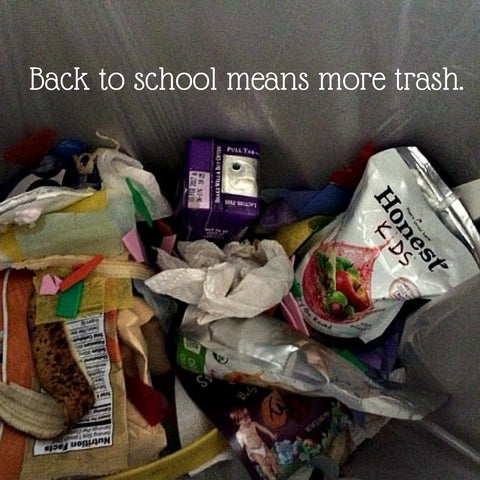Zero Waste Back to School Tips

Back to School Season means shopping. It's a tradition to start the school year with brand new clothing, backpack and school supplies. The truth is many purchases are unnecessary, expensive and create loads of trash. Save money and save the planet with some simple tips to help you go Zero Waste.
Let's start with clothing. The first day of school is exciting and everyone wants to look their best for the photos but... " fashion is the second dirtiest industry in the world, second only to oil." This was a statement made by clothing designer Eileen Fisher in an EcoWatch blog post. There are a lot of issues involved- raw materials, production, distribution and finally disposal of used clothing. One strong philosophy of zero waste is to buy quality that will last. When purchasing new clothing buy garments that are fashionable and well constructed. When your child outgrows their clothing pass it along to a friend, neighbor, resell or charity shop. Shopping at consignment boutiques and charity shops is both budget and eco friendly. The problem with buying trendy and cheap clothing is they rarely last through multiple washing and the abundance of cheap, worn out clothing is literally clogging up our earth. For more info on this serious topic check out 1 Million Women's Fast Fashion blog.

Next the backpack. Buy the sturdiest backpack you can find, either at a resell shop or from a good quality outfitter- think L L Bean, Land's End, Jansport. Look for a company that has a genuine guarantee. While the initial purchase will be pricier than a discount backpack, you want a backpack that will last for years. But you can't buy a large backpack for your child to grow into because to be comfortable it needs to fit properly. The perfect fit is below the shoulder blades and ending right around the waist. This means a backpack or bag for the preschool years, one for primary and perhaps another larger one for the elementary years. Any big growth spurt means time to buy another back pack. That's why it's so important to buy quality- your outgrown backpack will be perfect for another student. Another tip is to launder the backpack regularly. It's best to turn the backpack inside out before putting into the washing machine. Of course, as time goes on it will show signs of wear but keeping it clean will extend the life and appeal to the next owner. You can add a bit of excitement each school year by applying patches, cool pins or zipper pulls.
I also recommend purchasing a good quality water bottle. In fact depending on the age of your child you might have to buy more than one. Hydrating keeps us at our physical and mental best. You might need a water bottle for the lunch box, one to stay at school and one to keep in the backpack. Again, it's quality over price. Avoid cheap plastic water bottles that contain nasty toxins. You want a water bottle that is leak proof, insulated, non-toxic and dishwasher safe.

For school supplies start with a hunt around your house. I know I have drawers, tins and cups full of all kind of writing supplies. I think it's fair to say to our kids that before we buy new we're going to use up what we have. It's a good life style policy to instill as early as possible. You might even donate a box of found supplies to your child's classroom. When walking down the back to school aisles look for paper products that contain some percentage of recycled paper. Purchase from companies that are working for a better future. Crayola has an easy four simple steps marker recycling program called colorcycle.
There are many other ways to be more green when going back to school including lunches which is the subject of another blog.



